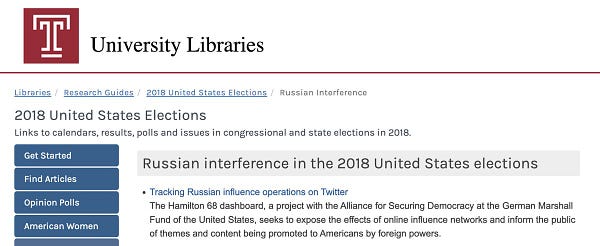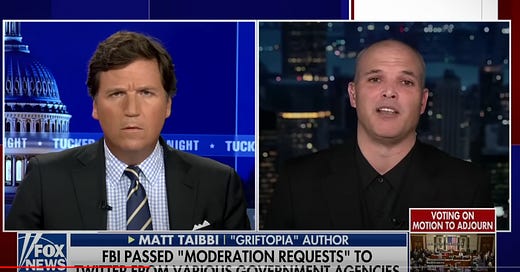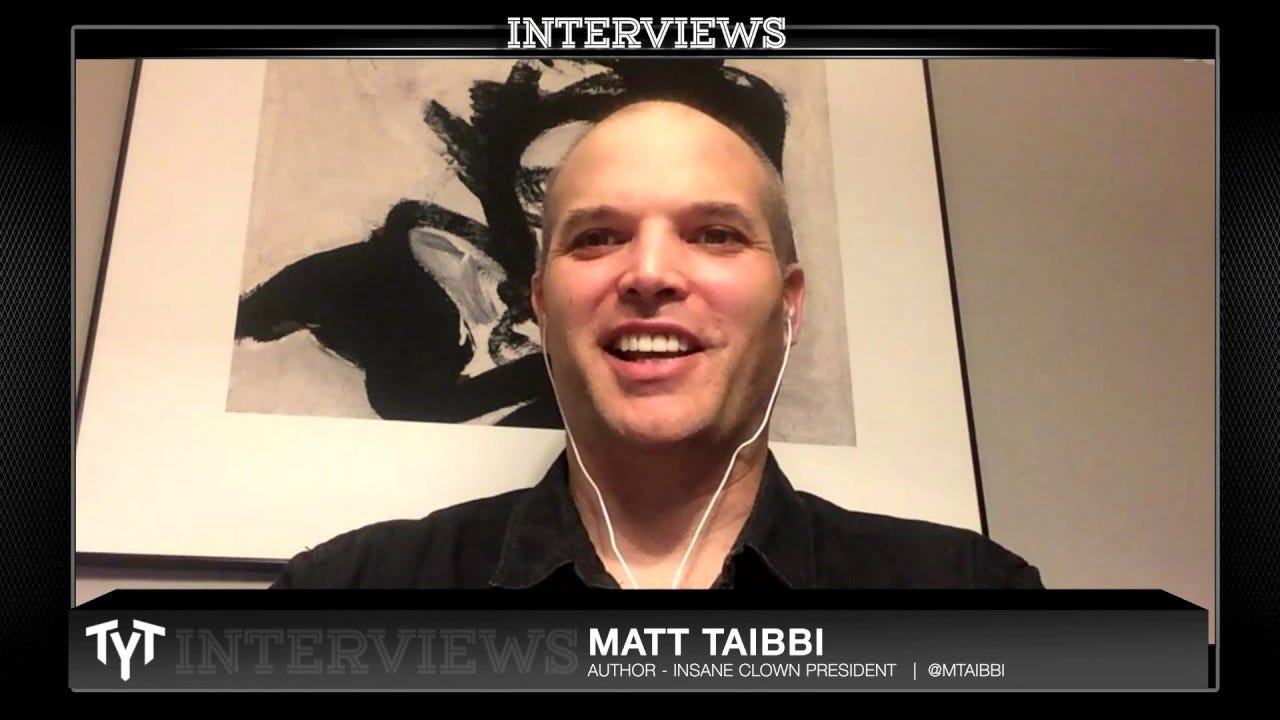Matt Taibbi's Bullshit
We looked into Taibbi's latest claims about a Russian influence tracking dashboard Hamilton 68 and found so many errors Taibbi should retract them immediately.
by Ben Cohen
Last week I covered Matt Taibbi’s latest Twitter Files release that he claimed proved definitively that the Russia collusion story was a hoax. The Twitter thread revealed major Democratic politicians and media outlets cited what Taibbi argued was faulty intelligence coming from a Russian disinformation tracking dashboard.
Taibbi drew wild conclusions from the files he published, ignored crucial context, and fed into right wing fantasies about “The Deep State”.
Taibbi then followed up the story by publishing a lengthy article about the “sham” methodology used by the Hamilton 68 Dashboard to track Twitter users spreading Russian disinformation. Taibbi claimed the dashboard created by the German Marshall Fund of the United States (GMFUS) and the Alliance for Securing Democracy (ASD) was used for “digital McCarthysim and fraud”, and constituted a “a scam”. Wrote Taibbi:
Instead of tracking how “Russia” influenced American attitudes, Hamilton 68 simply collected a handful of mostly real, mostly American accounts, and described their organic conversations as Russian scheming. As Roth [Twitter’s Trust and Safety chief] put it, “Virtually any conclusion drawn from [the dashboard] will take conversations in conservative circles on Twitter and accuse them of being Russian.”
There were three major classes of account on the Hamilton list: a thin layer of obvious Russians (e.g. https://twitter.com/RT_America), then the larger pile of real people from Western countries, followed by a percentage — somewhere between a fifth and a third — of “low user state,” “near dead,” “spammy” accounts that didn’t accumulate followers and “do not have a very wide reach on the platform.” Twitter executives observed that the zombie accounts were not amplifying the real accounts. Instead of, say, a group of Russian accounts boosting Trump messaging, it was the reverse — a bunch of real Trump accounts simulating Hamilton’s assertions about Russians.
“The selection of accounts is… bizarre and seemingly quite arbitrary,” wrote Roth. “They appear to strongly preference pro-Trump accounts (which they use to assert that Russia is expressing a preference for Trump… even though there’s not good evidence any of them are Russian).”
Taibbi’s thesis rests on the conclusions drawn by Twitter executives and engineers who analyzed “its Application Program Interface (API) requests” and “reverse-engineered” Hamilton’s list in 2017. Taibbi continued:
Even at Twitter, where there were basically no open conservatives in the email record, it was recognized that Hamilton 68 (and at least two other research institutes using similar methodology) were simply taking organic Trumpish chatter and describing it as Russian scheming.
The site “falsely accuses a bunch of legitimate right-leaning accounts of being Russian bots,” as Roth put it, getting “traction around partisan trends, to assert that any right-leaning content is propagated by Russian bots.”
From this evidence, Taibbi extrapolates that the entire Russia collusion story was an elaborate “illusion” and a “magic trick” that was “generated via a confluence of interests, between think-tanks, media, and government”.
This is, for lack of a better word, bullshit. Taibbi’s claims are not only untrue, but can only be understood as propaganda designed to deliberately mislead his readers.
There are several points worth making here:
1. Russia collusion still happened
The most important point that needs to be made about Matt Taibbi’s Twitter File release and his subsequent “take down” of Hamilton 68 is a very simple one: it doesn’t make any difference to the Russia collusion story whatsoever.
Taibbi’s laser like focus on a single analytics tool tracking a single social media platform cited by some media outlets and politicians does not refute the incontrovertible evidence that the Russian government engaged in a sophisticated social media driven disinformation campaign to elect Donald Trump.
This was painstakingly covered by the media and investigated by the Senate Intelligence Committee in 2020. Crucially, we know that Trump’s 2016 campaign team shared campaign info with a Russian intelligence officer in what the report called a "grave counterintelligence threat". Paul Manafort wasn’t just a staffer, he was Trump’s campaign chairman, and he met with Konstantin Kilimnik regularly to share sensitive campaign information. Manafort also refused to cooperate with investigators so we still do not know how extensive the collusion really was.
2. Twitter was still concerned about Russian influence
While Twitter did not believe Hamilton 68’s dashboard was effective at tracking Russian bots, they continued to report on Russian disinformation efforts on the platform and block accounts they believed were engaging in “platform manipulation that we can reliably attribute to Russian state actors” (this from an article published in 2020).
Taibbi wants his readers to believe that because Twitter refuted Hamilton 68’s analysis of Russian disinformation, they didn’t believe Russian disinformation was a problem. This is nonsense. Taibbi cites Yoel Roth at length on Hamilton 68, yet says nothing of the former Trust and Safety chief’s grave concerns about Russia’s increasingly sophisticated efforts to undermine US elections. Here was Roth in 2020 speaking to NPR:
ARI SHAPIRO, HOST: Intelligence officials have warned that Russia is interfering in the 2020 presidential campaign as it did four years ago. Back then, it used social media to spread disinformation and hoaxes. Yoel Roth is in charge of fighting these efforts on Twitter. He told me the company hasn't traced specific tweets about the 2020 campaign back to Russia, but he says Russia's tactics have also evolved.
YOEL ROTH: One of the main things that we saw in 2016 was the use of inauthentic personas. So these would be accounts that were pretending to be Americans to try and influence certain parts of the conversation. We've seen some indication that that remains part of the Russian playbook. And so they're trying to set up accounts that appear to be Americans or other people participating in political conversations to try and seem as though they are actually a member of the community that they're trying to impact.
SHAPIRO: And beyond candidates, these might be about gun rights or Black Lives Matter or LGBT rights or anything else that was controversial. At least that's what was documented in the Mueller report.
ROTH: Right. Those were some of the tactics that we saw most clearly in 2016, but I'd note that some of the tactics have evolved a little bit since then. For instance, in 2018, we saw activity that we believe to have been connected with the Russian Internet Research Agency that was specifically targeting journalists in an attempt to convince them that there had been large-scale activity on the platform that didn't actually happen.
Interestingly, this is the exact type of activity Hamilton 68 was trying to monitor.
3. Taibbi’s claims about Hamilton 68 are deeply misleading
In excellent breakdown on her newsletter, disinformation, weaponized influence, and social media manipulation expert Caroline Orr Bueno shows Taibbi grotesquely distorts what Hamilton 68 claimed to do. Here is Bueno on what the dashboard actually did:
Rather than focusing on individual account activity or bot detection, the tool [Hamilton 68] utilized a network approach to analyze aggregate activity of a network of accounts that regularly engaged with content “generated by attributable Russian media and influence operations.” The purpose wasn’t to see what individual accounts were tweeting, but rather to take the temperature of networks in which known pro-Russian propaganda and disinformation circulated on a regular basis. In other words, if you frequently engaged with content produced by RT, Sputnik, TASS, or any number of Russian proxy sites like SouthFront, your account could have been flagged as exhibiting behavioral indicators of Russian influence activity
Furthermore, Bueno argues Twitter’s analysis failed to take any of this into account:
The metrics by which Twitter executives evaluated the dashboard — the degree to which the accounts it monitored were Russian and/or bots — are not aligned with the stated methods and purpose of Hamilton 68. The dashboard didn’t claim that all or even most accounts were located in Russia, nor that they were bots. The purpose of the dashboard was to track Russian influence in cyberspace (specifically, social media), which is a different activity than tracking Russian accounts.
Taibbi has smeared the dashboard as a “neoliberal think-tank that spawned hundreds of fraudulent headlines and TV news segments may go down as the single greatest case of media fabulism in American history”. The truth is that Hamilton 68 never did what Taibbi claimed it was doing. Several media sources and politicians didn’t appear to understand the nuances either and erroneously used terms like “Russian bots” when describing what the dashboard found. But as Bueno notes:
His [Taibbi’s] thread is riddled with misrepresentations and tainted by bias, and most of the “proof” he offers up doesn’t actually prove much about Hamilton 68 at all; rather, it points to sloppy reporting (like the tendency to misuse the word “bots”, which, ironically, Taibbi is just as guilty of as the news organizations he lambasted in his thread) and a Twitter team that fundamentally misunderstood the nature of modern asymmetric information warfare and malign influence campaigns.
4. Taibbi is smearing media outlets for accurate reporting
A major part of Taibbi’s argument is that media outlets and academic institutions that used Hamilton 68 as a source should retract their stories and issue apologies for their roll in spreading misinformation:







If you check the stories Taibbi cites as “fake”, it is immediately apparent that most are in fact balanced reports on Russian disinformation efforts and Hamilton 68’s methodology in tracking them. Here’s an excerpt from an article published on Mother Jones in November of 2018 that Taibbi flagged:
The alliance plans to expand the dashboard soon and will fine-tune the list of accounts it tracks. The accounts still won’t be disclosed, in part so they won’t know they’re being watched. (If they were alerted to being tracked, they might change their behavior and compromise further analysis.) Schafer notes that there’s also a value in tracking the messaging as part of a network, rather than individual accounts. “We monitor accounts whose owners are extremely active in promoting Russian disinformation or Kremlin talking points, but who may or may not understand their role within the network,” he says. “Although these accounts play an important role in the dissemination of disinformation and are thus worthy of being studied, we do not believe that it is ethical to publicly connect those accounts to disinformation campaigns.”
As you can see, Mother Jones simply reported on Hamilton 68’s findings and what methodology they used to reach their conclusions. Twitter correctly asserted that the dashboard wasn’t tracking Russian bots or Russian actors, but again, that wasn’t what Hamilton 68 was claiming to do, even back in 2018 when Taibbi claims the damage was being done. Taibbi only had to read the articles he smeared to find this out. But then that would require doing real journalism — a craft Taibbi stopped practicing many years ago.
Read more on Matt Taibbi’s Twitter Files reporting:
Matt Taibbi, Clown Journalist
By feeding far Right fantasies, Taibbi is handing power to a MAGA infected Republican Party hell bent on revenge.
by Ben Cohen
If you believe Matt Taibbi, the latest #TwitterFiles dump proves definitively that the Russia collusion story was a Democratic conspiracy theory. Furthermore, Democrats and mainstream media outlets need a “truth and reconciliation” moment to come to terms with the damage they did to the country in the wake of Trump’s election in 2016….







Nice thorough piece. Real journalism at work.
When it comes to anything Taibbi...I smell money.
This article is now just one more in what is now de rigueur for the "Collusion uber alles" crowd. No matter how bad the mechanics are proved by Twitter to be, they will always cling to the gross over-exaggeration of the truth. Was there Russian influence on the 2016 Election? Sure. It amounted to just about nothing. HRC outspent trump, (a man i truly, truly loathe,) by almost $500M and still managed to lose to the WORST nominee in American political history. The real truth of HRC 2016 is that HRC and Mook are the worst campaign managers ever in American History.